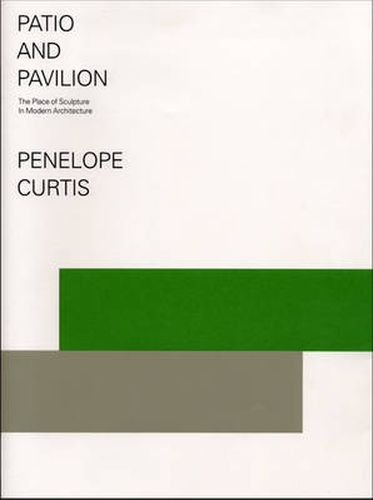Readings Newsletter
Become a Readings Member to make your shopping experience even easier.
Sign in or sign up for free!
You’re not far away from qualifying for FREE standard shipping within Australia
You’ve qualified for FREE standard shipping within Australia
The cart is loading…






This volume examines the relationship between modern sculpture and architecture in the mid-twentieth century, an interplay that has laid the ground for the semisculptural or semiarchitectural works by architects such as Frank Gehry and artists such as Dan Graham. The first half of the book explores how the addition of sculpture enhanced several architectural projects, including Mies van der Rohe’s Barcelona Pavilion (1929) and Eliel Saarinen’s Cranbrook Campus (1934). The second half of the book uses several additional case studies, including Philip Johnson’s sculpture court for New York’s Museum of Modern Art (1953), to explore what architectural spaces can add to the sculpture they are designed to contain. The author argues that it was in the middle of the twentieth century
before sculptural and architectural forms began to converge
that the complementary nature of the two practices began clearly to emerge: figurative sculpture highlighting the modernist architectural experience, and the abstract qualities of that architecture imparting to sculpture a heightened role. AUTHOR: Penelope Curtis is an art historian and author with a particular interest in modern and contemporary visual arts. Curtis has served as Director of Lisbon’s Museu Calouste Gulbenkian, Director of Tate Britain, London, and Curator of the Henry Moore Institute in Leeds. SELLING POINTS: . Examining the relationship between sculpture and its modernist architectural surroundings, this is a classic volume in the scholarship on the crossover of art and architecture. Will appeal to art and architecture students and enthusiasts alike . Written by renowned art historian Penelope Curtis, the book posits that the relationship between sculpture and architecture in the early twentieth century (for example in Mies van der Rohe’s Barcelona Pavilion) laid the ground for sculptural architecture later in the century (in buildings by Frank Gehry among others) . Also examines the trend for architectural art, for example the work of American artist Dan Graham . Explores examples of iconic modernist architecture enhanced by the presence of sculpture. Examines how these two art forms at first complemented one another and have since grown ever closer 12 colour, 60 b/w illustrations
$9.00 standard shipping within Australia
FREE standard shipping within Australia for orders over $100.00
Express & International shipping calculated at checkout
This volume examines the relationship between modern sculpture and architecture in the mid-twentieth century, an interplay that has laid the ground for the semisculptural or semiarchitectural works by architects such as Frank Gehry and artists such as Dan Graham. The first half of the book explores how the addition of sculpture enhanced several architectural projects, including Mies van der Rohe’s Barcelona Pavilion (1929) and Eliel Saarinen’s Cranbrook Campus (1934). The second half of the book uses several additional case studies, including Philip Johnson’s sculpture court for New York’s Museum of Modern Art (1953), to explore what architectural spaces can add to the sculpture they are designed to contain. The author argues that it was in the middle of the twentieth century
before sculptural and architectural forms began to converge
that the complementary nature of the two practices began clearly to emerge: figurative sculpture highlighting the modernist architectural experience, and the abstract qualities of that architecture imparting to sculpture a heightened role. AUTHOR: Penelope Curtis is an art historian and author with a particular interest in modern and contemporary visual arts. Curtis has served as Director of Lisbon’s Museu Calouste Gulbenkian, Director of Tate Britain, London, and Curator of the Henry Moore Institute in Leeds. SELLING POINTS: . Examining the relationship between sculpture and its modernist architectural surroundings, this is a classic volume in the scholarship on the crossover of art and architecture. Will appeal to art and architecture students and enthusiasts alike . Written by renowned art historian Penelope Curtis, the book posits that the relationship between sculpture and architecture in the early twentieth century (for example in Mies van der Rohe’s Barcelona Pavilion) laid the ground for sculptural architecture later in the century (in buildings by Frank Gehry among others) . Also examines the trend for architectural art, for example the work of American artist Dan Graham . Explores examples of iconic modernist architecture enhanced by the presence of sculpture. Examines how these two art forms at first complemented one another and have since grown ever closer 12 colour, 60 b/w illustrations